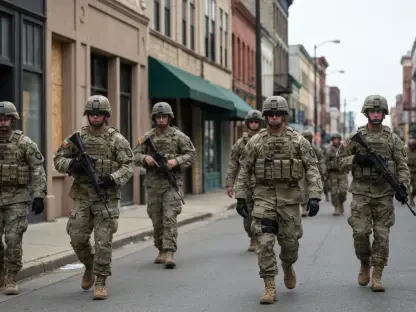In a world grappling with economic uncertainties and shifting global alliances, a significant diplomatic event unfolded in New Delhi, capturing the attention of international observers and marking a pivotal moment in rebuilding trust between Canada and India. Canadian International Trade Minister Maninder Sidhu’s recent visit to India’s capital, set against a backdrop of past tensions over the 2023 killing of Canadian Sikh activist Hardeep Singh Nijjar, signals a mutual desire to prioritize economic collaboration over historical disputes. The stakes are high as both nations navigate shared challenges, making this meeting a beacon of hope for renewed partnership.
Highlighting a Shift in Diplomatic Dynamics
The atmosphere in New Delhi was charged with optimism as Minister Sidhu met with Indian Commerce Minister Piyush Goyal to chart a new course for bilateral relations. This event represented a deliberate shift from past conflicts, focusing instead on actionable steps to restore diplomatic and economic ties. The discussions underscored a commitment to mutual respect and sovereignty, setting a tone of reconciliation that resonated throughout the talks.
Beyond the formalities, the meeting was a platform for both sides to acknowledge the importance of moving forward. Canadian leadership, under Prime Minister Mark Carney, has made it clear that rebuilding trust with India is a priority. This visit built on earlier interactions, such as Carney’s meeting with Indian Prime Minister Narendra Modi at the G7 summit earlier this year, where foundational agreements on resuming regular diplomatic services were first discussed.
Key Discussions and Sectoral Focus
High-Level Dialogue on Mutual Goals
A central highlight of the New Delhi engagement was the in-depth conversation between Sidhu and Goyal, which focused on strategic economic partnerships. Both leaders expressed a strong intent to collaborate in critical sectors such as aerospace, artificial intelligence, and energy. The emphasis on mutual benefit was evident as Canada highlighted its strengths in electric battery production while seeking Indian investment in infrastructure projects.
These talks were not just about immediate gains but also about establishing a framework for long-term cooperation. The commitment to appoint new high commissioners emerged as a tangible outcome, symbolizing a return to normalized diplomatic interactions. This step is seen as essential for sustaining the momentum generated during the visit.
Economic Pressures and Shared Challenges
Adding urgency to the discussions was the backdrop of global economic pressures, particularly the impact of steep U.S. tariffs under President Donald Trump. These tariffs have affected both Canadian and Indian markets, creating common ground for collaboration. Experts at the event noted that such external challenges are pushing both nations to look toward each other for stability and growth.
This shared economic vulnerability has transformed past grievances into a catalyst for unity. The focus during the meeting was on how interdependence can serve as a buffer against global uncertainties. Observers highlighted that aligning economic priorities could help both countries mitigate the broader impacts of international trade disruptions.
Targeted Collaborations in Key Industries
Delving into specifics, the event spotlighted opportunities in critical minerals and agriculture as areas ripe for partnership. Canada’s abundant resources in these sectors were presented as a complement to India’s robust investment capabilities. The potential for joint ventures in innovation-driven fields like artificial intelligence also took center stage, with both sides eager to leverage technological advancements.
The discussions painted a picture of complementary strengths driving mutual prosperity. For instance, Canada’s expertise in mining was paired with India’s capacity to fund large-scale projects, creating a synergy that could redefine bilateral trade. Such targeted engagements aim to foster growth while addressing the unique needs of each economy.
Milestones Achieved and Future Promises
One of the standout achievements of the New Delhi meeting was the reaffirmation of intent to move beyond historical tensions. Both nations pledged to streamline diplomatic channels, ensuring that regular interactions become the norm rather than the exception. This milestone was celebrated as a sign of maturity in handling past disagreements.
Looking ahead, the commitments made during this event lay the groundwork for sustained collaboration. The promise to deepen ties through consistent dialogue and economic initiatives reflects a shared vision for stability. These outcomes are expected to pave the way for more frequent high-level exchanges, reinforcing the partnership over time.
Reflecting on the Path Forward
The New Delhi meeting between Canadian and Indian officials stood as a testament to the power of dialogue in overcoming past rifts. Under the stewardship of Prime Minister Mark Carney, Canada demonstrated a resolute intent to mend and strengthen ties with India, as evidenced by the productive exchanges led by Minister Sidhu. The focus on key industries and diplomatic normalization marked significant progress in this journey of reconciliation.
As a next step, both nations should capitalize on the momentum by establishing joint task forces to oversee sector-specific collaborations, ensuring that promises translate into action. Exploring trade agreements tailored to address global economic challenges could further solidify this partnership. Additionally, maintaining open channels for cultural and people-to-people exchanges might help rebuild trust at a grassroots level, complementing the high-level efforts initiated during this historic event.









